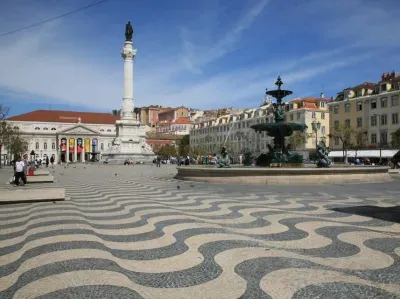
Praça de Dom Pedro IV
If you’re looking for the heart of Lisbon, this centrally located square with its traditional Portuguese mosaic cobbles has been one of the city’s main plazas for centuries. Located in the downtown Baixa district it is officially known as Praça Dom Pedro IV, the locals prefer to use its old name, 'Rossio'.
The square features a large pedestrian area flanked by trees with numerous cafes, restaurants and touristy shops - not to mention some majestic buildings, two elegant, bronze fountains, which were imported from France in the 19th century, and a statue shrouded in mystery. Artists and writers have gathered in the cafes around the plaza for generations, and modern visitors to the city will enjoy soaking up the vibrant atmosphere in the square where there always seems to be something going on.
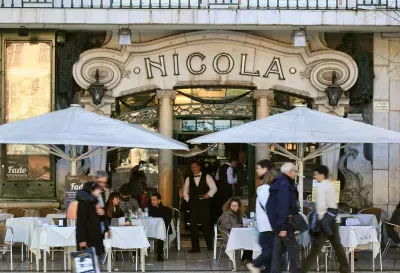
Rossio is home to two of Lisbon's best-known cafes; Cafe Nicola on the west side of the square was a firm favourite among the writers and artists of the 18th and 19th century, whilst the Pastelaria Suica has been regaling visitors with its fine cakes and al-fresco seating for many years.
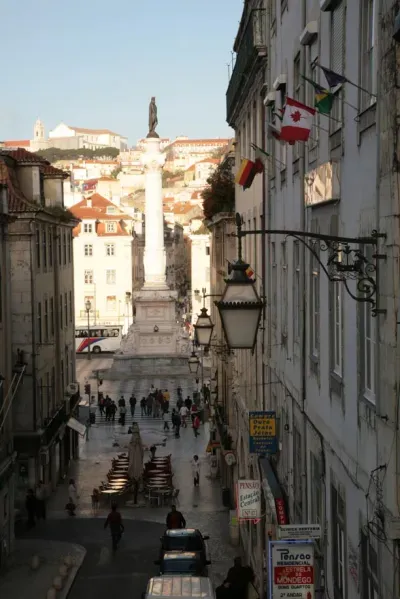
In the mid-19th century the square was paved in now traditional Portuguese manner. The ripple-effect, hand-polished, black and white stone cubes form a pattern might make you feel slightly dizzy. In fact at one time the square was nick-named 'rolling-motion square'. However, they represent an excellent example of local craftsmanship and pay homage to Lisbon’s seafaring past.
In the centre of the plaza, on a 23 metre-high pedestal, stands a bronze statue, supposedly that of Dom Pedro IV, King of Portugal and first Emperor of Brazil. The story goes that the statue is not of Dom Pedro at all, but is actually that of Emperor Maximilian I if Mexico, who was assassinated in 1867, just as as the Portuguese king's memorial was nearing completion.
Did the Portuguese save themselves the expense of commissioning their own statue and buy this one on the cheap? Most historians disagree, but the rumours won’t go away.
Rossio square has an interesting, if sometimes grim, history. There’s been some sort of plaza here for around 700 years, on what was once common land ('Rossio' translates roughly as 'common land'). Over the centuries this has been a scene of public executions, political demonstrations, markets and bullfights.
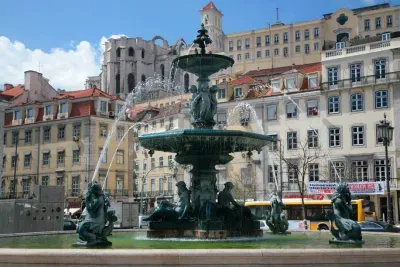
The Estaus Palace, built in 1450 used to stand here, and in 1536 this became the headquarters of the Portuguese Inquisition. The building contained a prison, where those deemed to be heretics were imprisoned and brutally tortured. The city’s first ritual burning by Auto-da-Fe was held in 1540. The former inquisitorial palace was destroyed by Lisbon’s devastating earthquake in 1755, and today the area where the palace on stood is home to the magnificent Neo-Classical building of the Teatro Nacional de Dona Maria II. This imposing building, designed by Italian architect Fortunato Lodi, dominates one side of the square and was named after Dom Pedro's daughter.
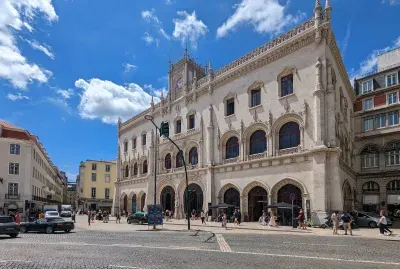
Rossio Train Station, with its beautiful façade designed by Jose Luis Monteiro in 1887 can be found on the north-western side of the plaza.